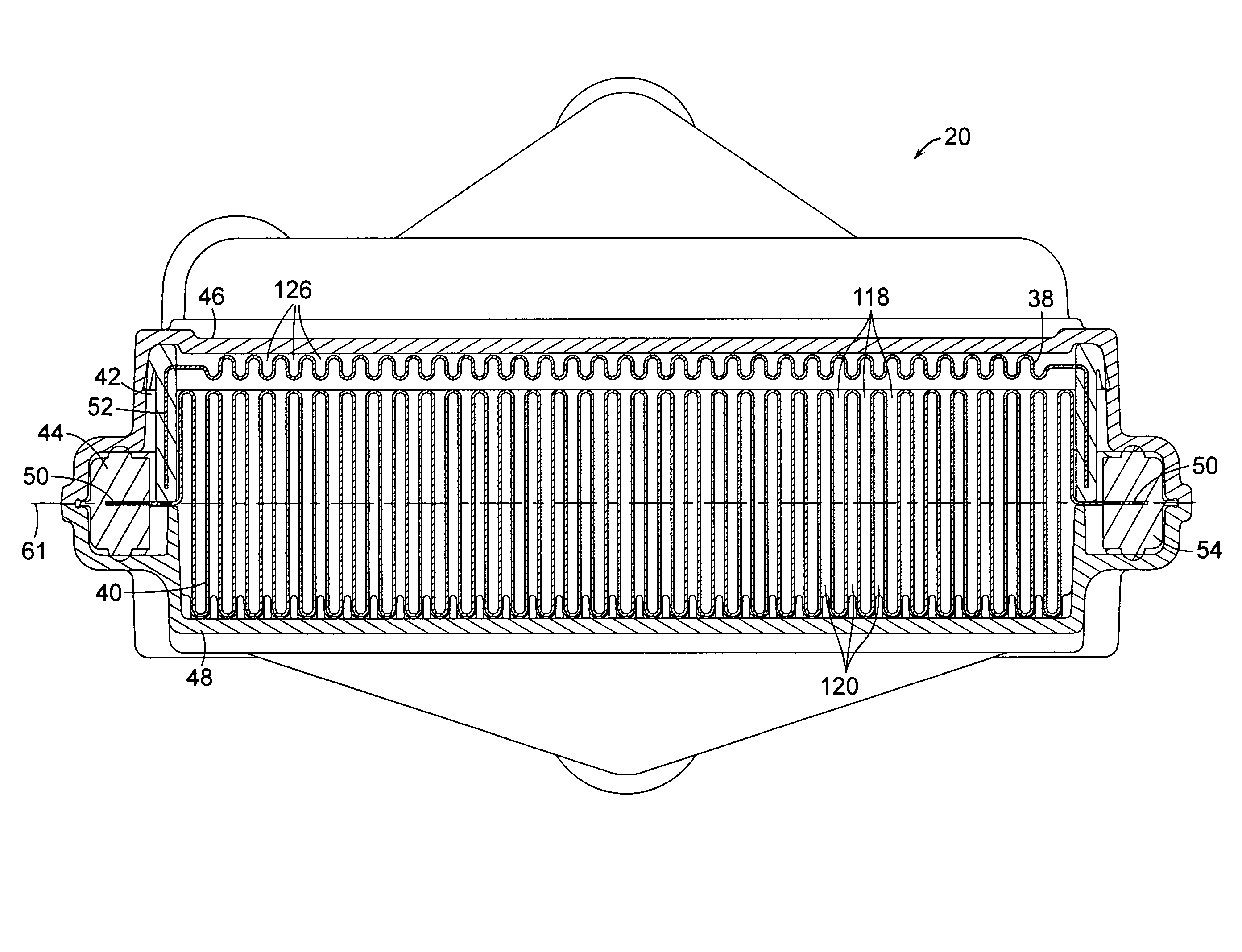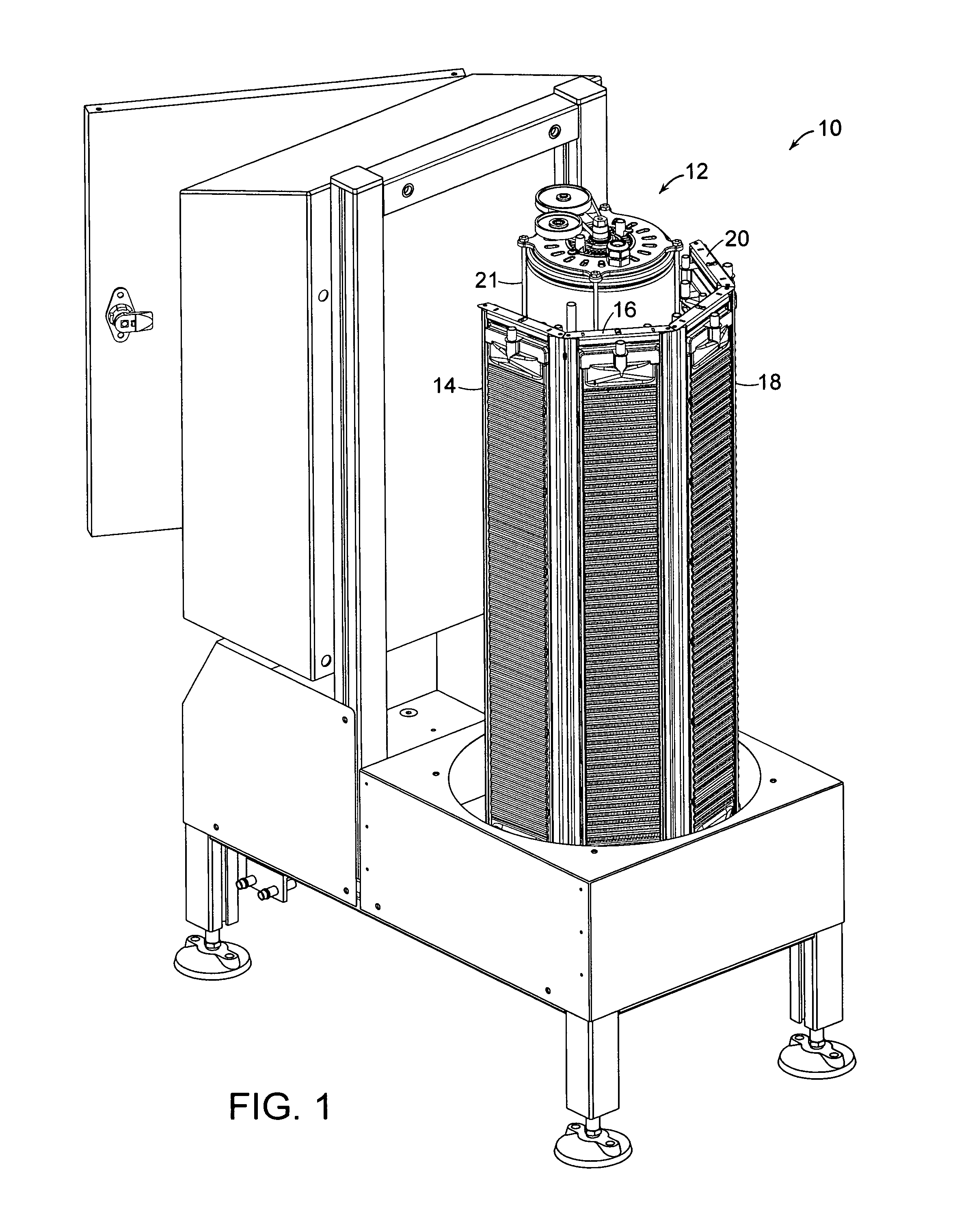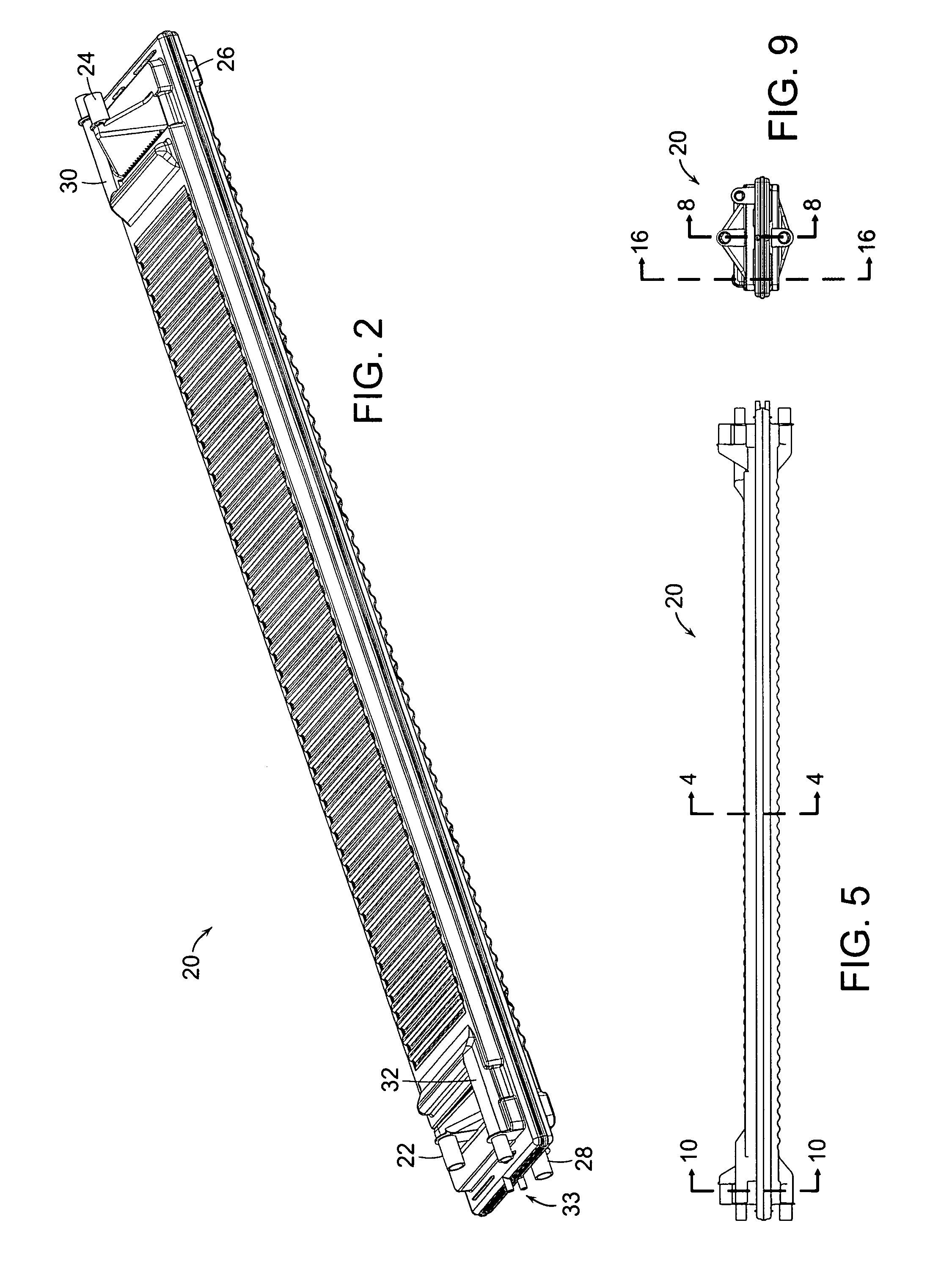Heat-exchanger sealing
a technology of heat exchanger and gasket, which is applied in the direction of separation process, lighting and heating apparatus, laminated elements, etc., can solve the problems of greatly increasing fabrication cost, and achieve the effect of reducing manufacturing cost, facilitating over-molding such a gasket, and greatly increasing fabrication cos
- Summary
- Abstract
- Description
- Claims
- Application Information
AI Technical Summary
Benefits of technology
Problems solved by technology
Method used
Image
Examples
Embodiment Construction
[0031]FIG. 1 depicts a distiller 10 in which rotary heat exchanger 12 produces purified distillate from contaminated influent and rejects the contaminates in a concentrate. A counterflow heat exchanger comprising four identical modules 14, 16, 18, and 20 operating in series receives the distillate and concentrate from the rotary heat exchanger 12 and transfers heat from them to the influent, which the counterflow heat exchanger then supplies to the rotary heat exchanger.
[0032]Specifically, influent that the distiller receives at an influent port not shown is pumped in one direction through the counterflow-heat-exchanger modules 14, 16, 18, and 20, where the influent absorbs heat from distillate and concentrate that flow through those modules in the opposite direction. Because of the opposite-direction flow, the influent is placed in thermal communication with increasingly hot distillate and concentrate as it advances through the counterflow heat exchanger and itself becomes hotter: ...
PUM
| Property | Measurement | Unit |
|---|---|---|
| flow rates | aaaaa | aaaaa |
| thermally conductive | aaaaa | aaaaa |
| thermal conductivity | aaaaa | aaaaa |
Abstract
Description
Claims
Application Information
 Login to View More
Login to View More - R&D
- Intellectual Property
- Life Sciences
- Materials
- Tech Scout
- Unparalleled Data Quality
- Higher Quality Content
- 60% Fewer Hallucinations
Browse by: Latest US Patents, China's latest patents, Technical Efficacy Thesaurus, Application Domain, Technology Topic, Popular Technical Reports.
© 2025 PatSnap. All rights reserved.Legal|Privacy policy|Modern Slavery Act Transparency Statement|Sitemap|About US| Contact US: help@patsnap.com



